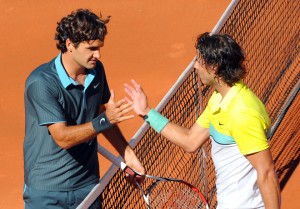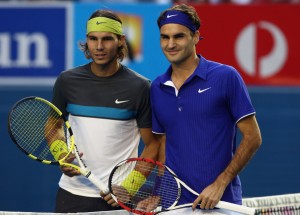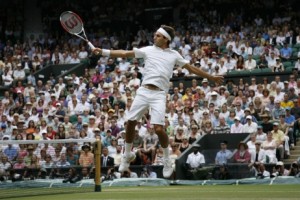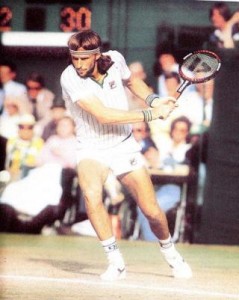A Reversal in Tennis Fortunes in 2009 as Federer Vs. Nadal on Clay 2

Roger Federer wins the 2009 final at the ATP Madrid Open against Rafael Nadal.
2009 did not begin well for the man from Switzerland, Roger Federer. He made headlines after the Australian Open––not because he won––but because he cried a river after his loss. As did his fans.
He did everything better than Rafael Nadal except win the big points when it mattered, losing 5-7, 6-3, 6-7, 6-3, 2-6. His tears were out of frustration and anger at himself when he felt the match should have been his.
Understandably Federer started the year under pressure––recovering from a back injury suffered in the waning months of 2008. In the early moments of 2009, the World No. 2 lost in the semifinals at Abu Dhabi to Andy Murray. Then he lost again to Murray in the semifinals at Doha. Finally he captured a win in the finals over Stanislav Wawrinka at the exhibition in Kooyong just prior to the Australian Open.
During the lead-up matches to the finals at the 2009 Australian Open, Federer played well enough. He defeated his early opponents in straight sets. In the 4th round he came back from two sets down to defeat Tomas Berdych in five sets. Then he took out both Juan Martin del Potro and Andy Roddick, respectively in the quarterfinals and semifinals to reach the championship match where Nadal awaited.

Rafael Nadal and Roger Federer pose at the beginning of the 2009 Australian Open final.
After he lost the Australian Open final, Federer blamed his erratic first serve for his loss; but up until the final, the Swiss maestro appeared to be hitting the ball well.
Regardless, he left Australia distraught over this lost opportunity. A win would have pulled him equal to Sampras’ record of 14 grand slam titles.
Feeling he needed additional time to heal from his back injury and as a further precaution, Federer decided to withdraw from Dubai and a much-anticipated Davis Cup tie with the United States.



